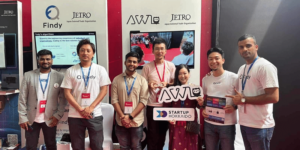To win the race of accelerated digitalisation, organisations are constantly evolving their hiring strategies. As and when a crisis unfolds, these organisations buckle down to refine their hiring process and win the war of talent. Furthermore, the tremendous pressure of successful recruitment on organisations is making human resources (HRs) adopt modern practices to ensure fairness and efficiency in the hiring process.
From identifying the right channel to sourcing the desired candidate and potentially fast-tracking them through proper recruitment and onboarding procedures, HRs are looking to optimise the entire process and cost. A successful and organised recruitment procedure can assist in finding talent aligned with the brand’s values, culture and purpose.
After the onset of the pandemic, a majority of hiring processes moved to the virtual space, integrating advanced technologies. Organisations are deploying new-age strategies that not only expedite the hiring process but also eliminate bias in assessing candidates and provide insights for data-driven decision-making.
Adopting a digitised approach
Technology has become an indispensable part of every function and has replaced manual processes with automated ones. Talent managers too need to adopt an automated approach when it comes to hiring with efficiency. Embedding technology tools can replace repetitive mundane tasks without wasting valuable time and skills on manual execution. Unfortunately, several organisations still require their employees to spend hours completing time-consuming tasks. By automating the recruitment process, talent managers can spend more time analysing the candidates’ data and finding people with requisite skills.
Expanding the horizon to remote employees
Prior to the pandemic, it was hard for organisations to think of having full-time remote employees. However, the overnight shift of office work to the virtual space has settled the challenges of remote work and concurred that having a remote workforce is possible. As a result, talent managers now get a larger pool of potential candidates because geography is no longer a barrier to talent. In addition, it also contributes to an organisation’s diversity, equity and inclusion policy with employees belonging to different territories and cultures.
Establishing a leadership culture
Promoting a sense of ownership in employees breeds leaders of tomorrow. Hence, designing a strategy that empowers the culture of leadership within the company can help talent managers attract better talent to the industry. Superior talent in an organisation gives new wings to the business. This can be nurtured by providing innovative leadership training to employees, who can thus provide a competitive edge to the organisation. Therefore, exhibiting ownership culture and high-performance variability can prove to be a game-changer in building a stronger workforce.
Considering internal mobility
Depending on external knowledge and sources remains top of the mind of talent managers while finding the much-needed skills. However, this strategy can be time-consuming as well as expensive. Talent managers often overlook internal promotions or the benefits of internal mobility while filling up open positions. As a robust hiring solution, talent managers must leverage the existing relationships in their existing employee base to accelerate productivity along with efficiency. According to data from LinkedIn’s latest Workplace Learning Report, companies that leverage internal mobility reportedly retained employees for 5.4 years.
Adopting employee flexibility
No candidate wants to join a workplace where employees feel exhausted. Talent managers must explore ways to offer flexibility to the workforce while improving employee engagement and experience. Organisations can adopt a hybrid work approach to attract highly qualified candidates as employees get the satisfaction of supplementing their time for in-person events and activities. In addition, employees enjoy their job role when provided with flexible work conditions, which need to be considered as an integral part of modern hiring practices.
Wrapping up
Recruitment is complicated and constantly evolving. Certain hiring practices may not always be the easiest ways to find talent in the highly competitive post-pandemic era. However, the integration of technology can help talent managers draw candidates with the requisite skills for the job openings. This can help talent managers identify excellent applicants for open positions and stay ahead of competition.
(Disclaimer: The views and opinions expressed in this article are those of the author and do not necessarily reflect the views of YourStory.)








![Read more about the article [Funding alert] Data security startup Seclore raises $27M; VenturEast exits with 17.5X return](https://blog.digitalsevaa.com/wp-content/uploads/2022/02/funding-1645511711142-300x150.jpg)
